 EndoTODAY 내시경 교실
EndoTODAY 내시경 교실
Beginner | ESA | Schedule | OPD
Seminars | Atlas | Recent | Links
 [GAVE (gastric antral vascular ectasia)]
[GAVE (gastric antral vascular ectasia)]
Gastric antral vascular ectasia (GAVE) is an unusual but interesting cause of chronic gastrointestinal blood loss and anemia. GAVE was first described in 1953 by Ryder in the gastrectomy specimen of an elderly woman, as 'erosive atrophic gastritis with marked venocapillary ectasi'. In endoscopy, GAVE has unique appearance characterized by prominent erythematous stripes radiating in a spoke-like fashion from the pylorus to the antrum. Jabbari called it as 'watermelon stomach. GAVE is commonly misinterpreted as antral gastritis.
It is most common in the eldery women. It may be associated with cirrhosis in about 30% of cases. Common presentation is iron-deficiency anemia secondary to occult blood loss. Overt gastrointestinal bleeding in the form of intermittent melena and hematemesis is also possible. Histology (not necessary for a diagnosis) usually shows fibromuscular hyperplasia of the lamina propria, intravascular fibrin thrombi and an increase in the mean cross-sectional area of the lumen in mucosal vessels
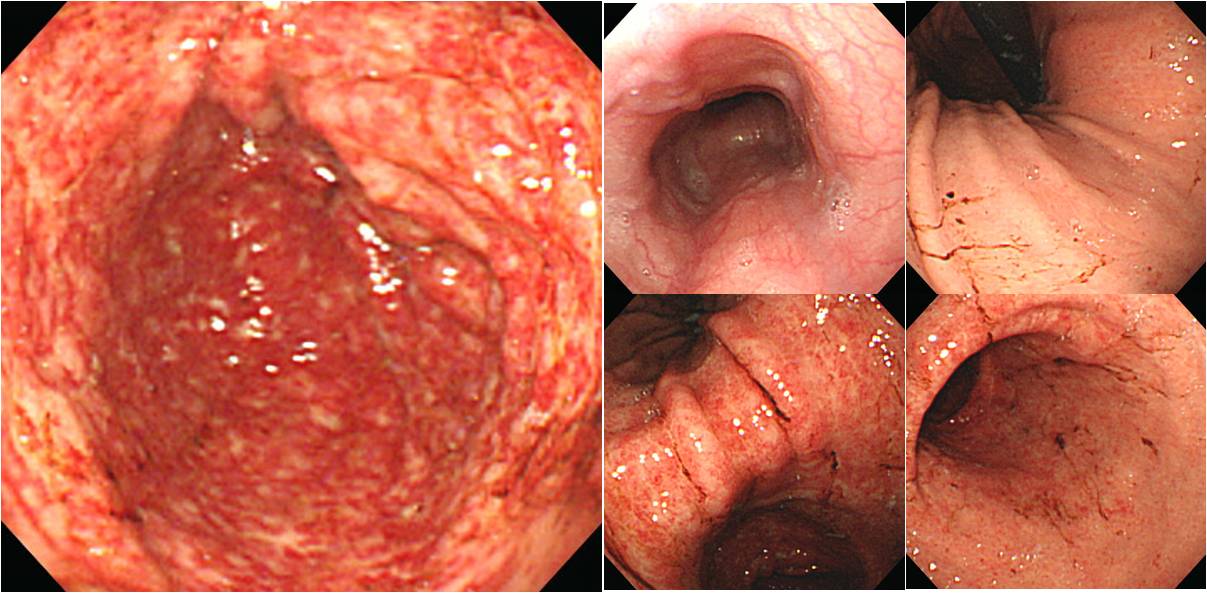
GAVE in the patient with liver cirrhosis

Radiation-induced gastroduodenitis
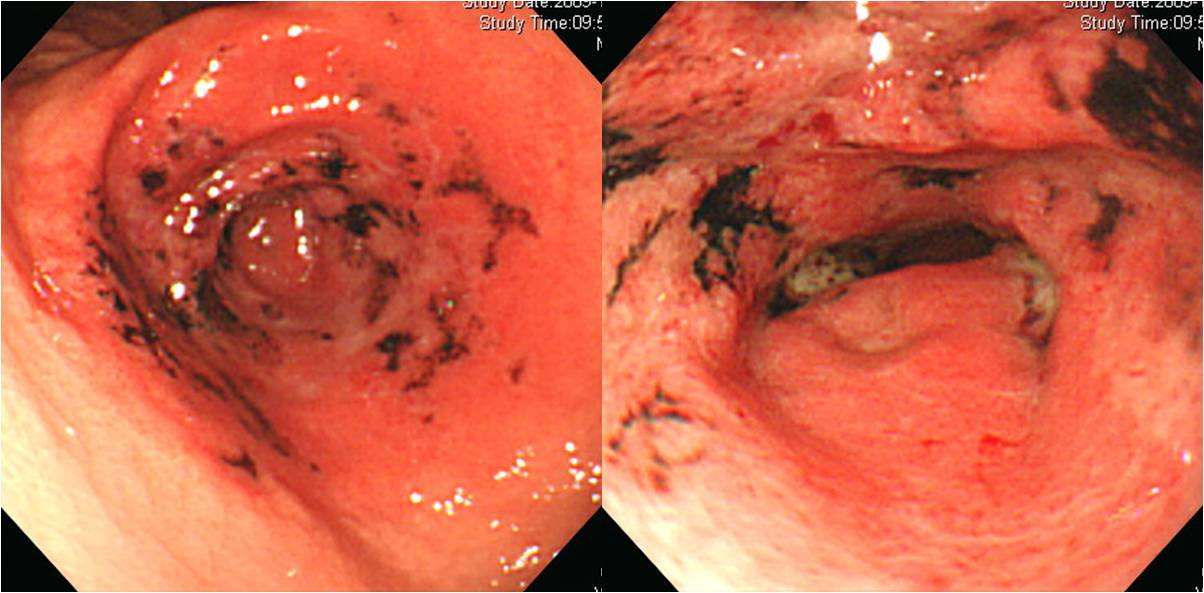
AGML (acute gastric mucosal lesion)

Aspirin-induced acute gastric mucosal lesion
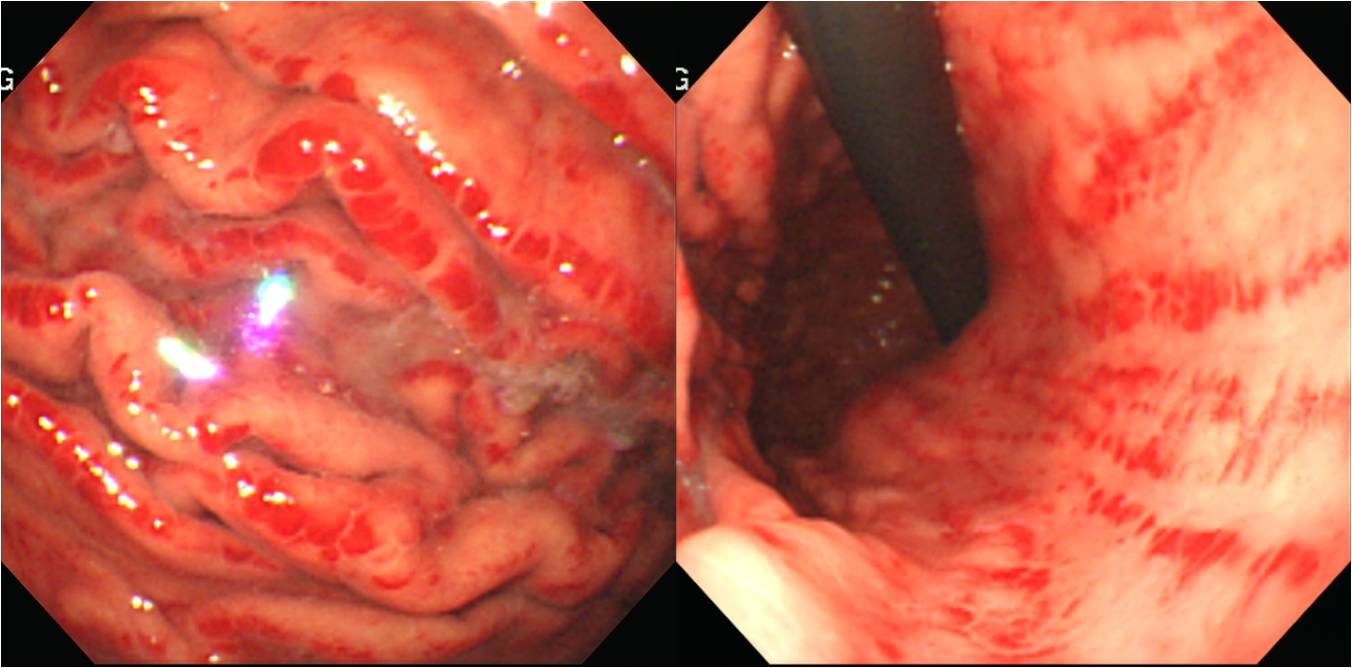
Portal hypertensive gastropathy
![]() 기생충이 발견되면 환자에게 설명하는 것도 쉬운 일이 아닙니다. 워낙 익숙하지 않기 때문입니다. 일전에 광절열두조충 환자가 있어서 설명서를 만들어 보았습니다. 보다 자세한 것은 EndoTODAY Parasitology를 참고하시기 바랍니다.
기생충이 발견되면 환자에게 설명하는 것도 쉬운 일이 아닙니다. 워낙 익숙하지 않기 때문입니다. 일전에 광절열두조충 환자가 있어서 설명서를 만들어 보았습니다. 보다 자세한 것은 EndoTODAY Parasitology를 참고하시기 바랍니다.
[광절열두조충(D. latum) 혹은 동해긴촌충(D. nihonkaiense) 환자 안내서]
과거에 비하여 현저히 줄어들었지만 아직도 위장관 기생충이 있습니다. 과거에는 흔했기 때문에 진단과 치료가 쉬웠지만, 요즘은 드물어서 오히려 진단이 늦어지는 예가 많습니다. 내과 의사들도 기생충 질환에 익숙하지 않습니다.
위장관 기생충 중 테이프처럼 생긴 것을 조충이라고 부릅니다. 조충은 대나무처럼 마디가 있습니다. 마디가 좁고 긴 것이 있고, 넓고 짧은 것이 있습니다. 광절열두조충(廣節 넓을 광, 마디 절)은 마디가 넓고 짧은 조충입니다.
 테이프
테이프
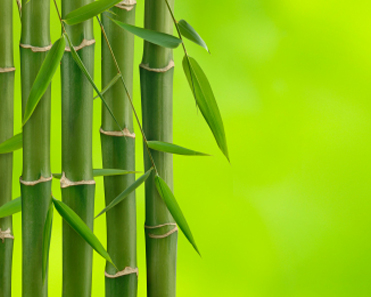 대나무
대나무
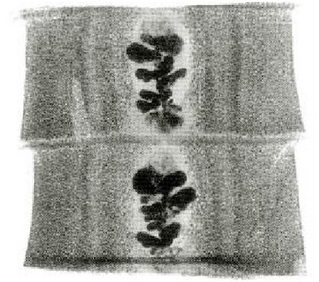 광절열두조충 (일부)
광절열두조충 (일부)
광절열두조충(D. latum)은 매우 길기 때문에 과거 '긴촌충'이라고 불렀습니다. 긴 것은 10 미터 정도입니다. 항문으로 긴 테이프 같은 것이 나오고 당기면 끊어지므로 깜짝 놀라서 병원을 찾는 환자가 많습니다. 다행스럽게 인체에 잘 적응된 기생충인지라 큰 병을 일으키지는 않습니다. 스칸디나비아 반도 같은 곳에서는 심한 경우 무기력증, 설사, 복통, 빈혈 등이 올 수 있다고 합니다. 우리나라에서 심한 환자는 거의 없었습니다.
원인은 생선입니다. 연어, 송어, 농어 등 어류를 날로 혹은 덜 익혀서 먹을 때 감염됩니다. 훈제 연어를 즐겨 먹은 경우에도 감염될 수 있습니다.
대변검사에서 충란을 확인하거나 환자가 가져온 충체 절편을 확인하여 진단합니다. 치료약은 praziquantel(디스토시드)입니다. 이 약은 간흡충(= 간디스토마) 치료제인데 용량이 다릅니다. 간흡충 치료에는 8알 정도 필요하므로 8알이 한 박스로 포장되어 있습니다. 광절열두조충은 600mg짜리 1알 혹은 2알만 1번 드시면 치료됩니다 (10 mg/Kg). 가족사이에서 전염되지 않습니다. 생선을 잘 익혀드시는 것 이외의 특별한 예방책은 필요하지 않습니다.
흔한 기생충약은 두 가지가 있습니다. 보통 약국에서 파는 기생충약은 회충, 요충, 편충, 십이지장충 치료약입니다. 광절열두조충이나 간흡충에는 전혀 듣지 않습니다. 그래서 기생충약을 먹었는데도 좋아지지 않아 오시는 분이 많습니다.
광절열두조충과 구분이 어려운 것이 동해긴촌충(D. nihonkaiense)입니다. 사실 모양이 똑 같습니다. 유전자 검사로 구분할 수 있지만, 어짜피 치료는 같습니다. 국내의 광절열두조충을 상세히 검사하면 대부분 동해긴촌충으로 나온다고 합니다.
2) [2014-2-26. 경향신문]13세 남아 몸에서 길이 3.5m 기생충 나와